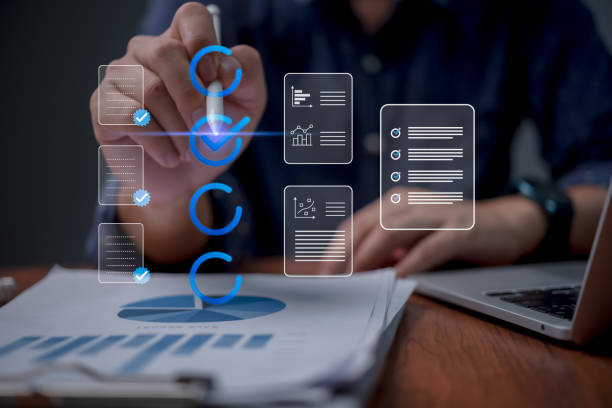Introduction to the Concept of User-Friendly Website Design and Its Importance

In today’s digital world, where there is fierce competition among businesses, having a website is not merely about having an online presence; rather, the quality of this presence is vitally important.
#User_Friendly_Website_Design goes beyond just the aesthetic appeal of a website; this concept includes how visitors interact with the site, the ease of accessing information, and their overall satisfaction with the experience.
A user-friendly website is designed to prioritize the needs of its users, easily guide them along their desired path, and build a sense of trust and satisfaction in them. This fundamental principle forms the basis for the success of any online business.
If users cannot easily navigate your site or find the information they need, they will quickly leave and turn to competitors.
Therefore, optimized user experience (UX) directly impacts conversion rates and customer loyalty.
This approach not only leads to increased customer satisfaction but also significantly helps improve the site’s ranking in search engines.
Search engines like Google place websites that offer a better user experience higher in their rankings.
This itself is a reason for the double importance of this topic.
From an educational perspective, it can be said that designing a user-friendly site requires a deep understanding of user behavior and needs. This includes data analysis, user testing, and implementing their feedback.
For example, interactive website design means that every element and every section of the site has a specific purpose to help the user.
This analytical approach forms the foundation of a successful website.
In summary, user-friendly website design is no longer a luxury option, but a strategic necessity for any business seeking sustainable #online_success and growth in the digital space.
Are you worried about losing customers because you don’t have a professional e-commerce site?
With e-commerce site design by Rasaweb, forget these worries!
✅ Significant increase in sales and visitor-to-customer conversion rate
✅ Professional and user-friendly design that builds customer trust
⚡ Get free consultation from Rasaweb
The Importance of User Experience (UX) and User Interface (UI) in Web Design
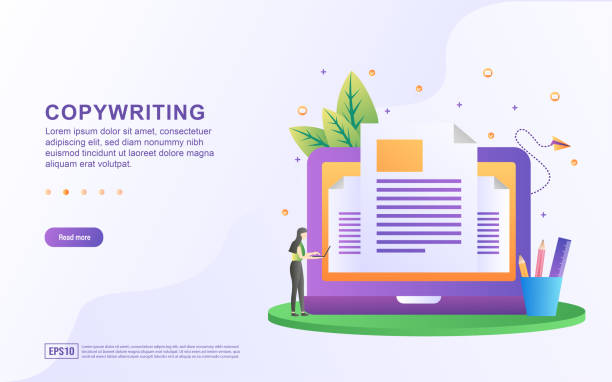
In the discussion of user-friendly website design, two key and related concepts, namely User Experience (UX) and User Interface (UI), play a pivotal role.
Although these two terms are often used interchangeably, they have subtle differences that are essential to understand for creating a truly effective website.
UX refers to all aspects of a user’s interaction with a product or service, while UI deals with the appearance, feel, and interactive capabilities of a website or application.
In other words, UX is more about the user’s “feeling” when using the product, while UI refers to the product’s “appearance”.
An attractive UI design can draw users to your site, but a poor UX will quickly drive them away. Imagine you have a website with stunning graphics and engaging animations, but its navigation is confusing, registration forms are complex, or page loading times are very long.
In this case, users will quickly get frustrated and look for alternative options.
This is where the importance of user-friendly website design truly reveals itself.
Explanatory content in this area should point out that website success depends on the balance and harmony between these two elements.
Design teams should pay special attention to both UI and UX aspects in the initial stages of web development to ensure that the website not only looks good but also functions flawlessly.
This comprehensive approach guarantees a website with an optimal user interface and an unforgettable experience for visitors.
Key Principles and Best Practices for Designing an Interactive Website
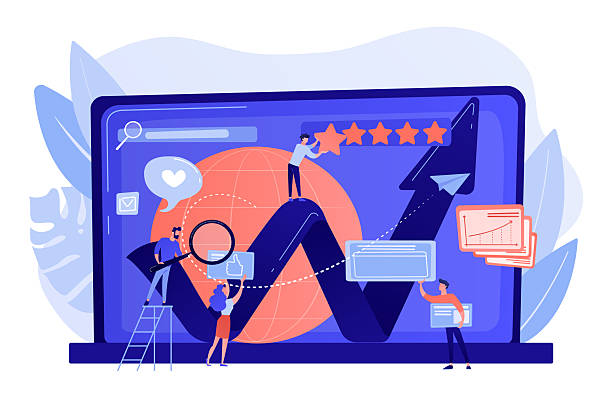
To achieve the goal of user-friendly website design, a set of principles and best practices must be observed.
These principles serve as a roadmap to ensure that a website is not only beautiful but also highly efficient and effective.
The first principle is simplicity.
Complex and cluttered websites confuse users.
A clean and minimalist design that focuses on the main content provides a better experience.
The second principle is consistency in design.
Navigation elements, fonts, colors, and layout should be integrated throughout the website so that users feel familiar and comfortable.
The third principle is visual feedback.
Users should always know where they are on the site and what the result of their action has been (e.g., by a button changing color after clicking).
The fourth principle is predictability.
Users expect website elements to behave in specific ways (e.g., the logo should lead to the home page).
This predictability gives them a sense of control and security.
The fifth principle is efficiency and loading speed.
No one likes to wait; therefore, optimizing site speed is crucial for a smooth user experience.
These principles outline a specialized approach to creating a site with easy navigation.
| Design Principle | Explanation | Benefit for User |
|---|---|---|
| Simplicity and Clarity | Avoiding unnecessary complexities and presenting information directly. | Reduced confusion, quick information retrieval. |
| Consistency and Integration | Using similar elements (color, font, layout) throughout the site. | Familiarity and comfort, reduced learning time. |
| Feedback and Predictability | Informing the user about the status of an action and predictable behavior of elements. | Increased trust, sense of control. |
| Accessibility | Designing for all users, including those with disabilities. | Inclusivity, usability for a wider range of audiences. |
The Importance of Navigation and Accessibility in a User-Friendly Site

Navigation and Accessibility are two fundamental pillars in user-friendly website design that directly affect the ease of use and inclusivity of a website.
Effective navigation allows users to move effortlessly and without confusion through different pages of the site and access the information they need.
A clear, logical, and consistent navigation menu is the cornerstone of an excellent user experience.
Broken links, hidden menus, or disorganized content discourage users and lead them to leave the site.
Therefore, designing a hierarchical and understandable navigation structure, using clear labels for links and buttons, is crucial.
On the other hand, accessibility means designing a website that is usable for everyone, regardless of their abilities or circumstances.
This includes people with visual, auditory, motor, or cognitive disabilities.
Adhering to accessibility standards like WCAG (Web Content Accessibility Guidelines) is not only an ethical imperative but can also significantly expand your target market.
For example, using alt text for images, captions for videos, appropriate color contrast, and keyboard navigation are among the actions that help improve accessibility.
This aspect of web design has a guidance and explanatory nature and demonstrates how an interactive website design can literally be “for everyone.”
Ignoring navigation and accessibility not only harms the user experience but can also lead to losing a significant portion of the audience and damaging your website’s credibility.
Does your company’s website perform as befits your brand? In today’s competitive world, your website is your most important online tool. Rasaweb, specializing in professional corporate website design, helps you to:
✅ Attract customer credibility and trust
✅ Convert website visitors into customers
⚡ Get a free consultation!
The Importance of Visual Design and Its Impact on Brand Perception
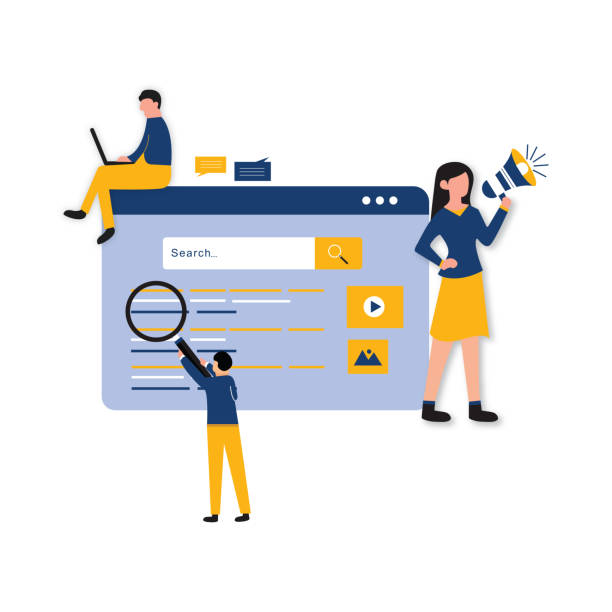
Visual design is one of the most powerful tools employed in user-friendly website design and plays a crucial role in shaping a user’s perception of the brand and website.
This aspect includes all visual elements such as colors, fonts, images, icons, layout, and white space.
A harmonious and attractive visual design not only makes the website beautiful but can also evoke specific emotions in the user and convey the brand’s message more effectively.
For example, using warm colors can convey a sense of energy and passion, while cool colors might evoke a sense of calm and professionalism.
Fonts also play an important role in creating the brand’s tone and personality; a formal and classic font can convey seriousness, while a modern and creative font might inspire a sense of innovation.
From a specialized perspective, a strong visual design gives the website identity and distinguishes it from competitors.
This visual identity must align with the brand’s values and goals.
For example, a website aiming to provide legal consulting services should use a formal and reliable visual design, while a website related to computer games can leverage an energetic and creative visual design.
Optimizing web user experience through visual design is not limited to aesthetics; rather, it means creating a deeper connection with the audience and strengthening the brand name, which ultimately leads to increased customer trust and loyalty.
This visual design, like a silent narrator, tells your brand’s story to users.
Content Strategy and Its Role in Attracting and Retaining Audiences
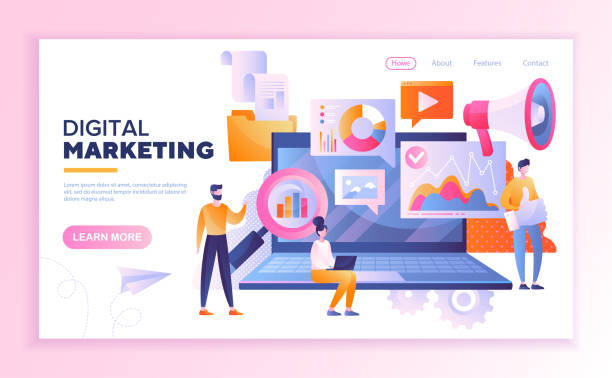
Content is the beating heart of any website, and in the discussion of user-friendly website design, content strategy holds special importance.
Regardless of what product or service your website offers, its content must be valuable, relevant, and engaging for the target audience.
A strong content strategy not only helps attract new visitors but also keeps them on the site longer and converts them into loyal customers.
Content can be presented in various forms such as educational articles, videos, infographics, blog posts, and FAQs.
One of the key aspects in this area is producing thought-provoking content that makes users think and encourages them to interact more with the site.
This type of content can include in-depth discussions, case studies, or even intellectual challenges.
Furthermore, website content should be designed to answer potential user questions and solve their problems.
This guidance approach helps increase user trust in your brand.
Optimizing content for search engines (SEO) is also an inseparable part of content strategy.
Using relevant keywords, proper content structuring with short headings and paragraphs, and adding relevant images and videos all help improve the site’s ranking in search results.
Ultimately, up-to-date content and its continuous refreshment ensure that users return to your site for new information, which itself is a clear example of an easily navigable site that consistently provides value to its audience.
Responsive Design and Mobile Performance: Essential for Every Site

In the current era, where the use of mobile devices to access the internet has become extremely common, Responsive Design is no longer an advantage but an undeniable necessity in user-friendly website design.
Responsive design means that your website can automatically and intelligently adjust its layout and content to the screen size of the device the user is using (from desktop computers and laptops to tablets and smartphones).
This ensures that users, regardless of the device they use, will have a consistent and optimized experience.
Mobile performance goes beyond merely being responsive and includes loading speed, ease of touch navigation, and optimizing forms for mobile input.
Search engines like Google also give higher rankings to websites that provide a good mobile experience.
This is important news for anyone looking to increase their website’s visibility and traffic.
An interactive website design that is fully optimized for mobile not only increases user satisfaction but can also significantly improve conversion rates.
From an analytical perspective, data shows that a large portion of web traffic originates from mobile devices, so ignoring this aspect can mean losing a vast volume of audience and business opportunities.
Investing in responsive design and mobile optimization is an investment in the future of your business.
| Mobile Performance Element | Importance | Impact on UX |
|---|---|---|
| Loading Speed | Reduced bounce rate, improved SEO. | Users have a fast and smooth experience, get less frustrated. |
| Large Buttons and Links | Easy to click with finger, reduced user error. | Easy navigation, no need to zoom. |
| Simple Forms | Easy data entry on a small screen, reduced form abandonment. | Increased form completion rates, better registration experience. |
| Optimized Images | Reduced file size, increased loading speed. | Faster page loading, reduced data consumption. |
User Testing and Feedback Collection for Continuous Improvement

Even the best designers cannot predict all user needs on their own.
For this reason, User Testing and feedback collection are vital elements in the process of user-friendly website design and web user experience optimization.
User testing involves observing real users as they interact with the website.
This can help identify navigation issues, weaknesses in UI design, and sections where users get confused.
Through this analytical process, gaps and flaws can be found that might have been overlooked in the initial design stages, even with the most meticulous adherence to principles.
Various methods exist for user testing, including A/B tests, user interviews, surveys, and direct user observation.
Feedback collection can also be done in various ways, including on-site feedback forms, emails, and social media monitoring.
User-friendly website design is not a static process, but a continuous cycle of design, implementation, testing, and optimization.
User feedback is an invaluable resource for discovering their needs and expectations.
By actively listening to users and analyzing their behavioral data, targeted improvements can be made to the website, leading to increased satisfaction and loyalty.
This guidance approach helps us build a website that not only meets current user needs but also evolves with changing needs and technology.
No website is flawless from the start; the key to success lies in the ability to constantly listen, learn, and adapt.
Is your e-commerce site ready to attract maximum customers and increase sales? Rasaweb transforms your online business with modern and efficient e-commerce website designs.
✅ Increased speed and improved SEO
✅ Excellent user experience on mobile and desktop⚡ Get a free e-commerce website design consultation from Rasaweb!
Synergy of SEO and User-Friendly Design for Greater Visibility
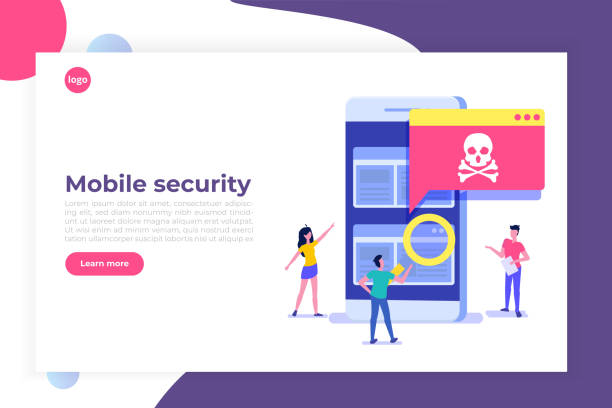
As mentioned earlier, user-friendly website design not only affects customer satisfaction but also plays a significant role in improving SEO (Search Engine Optimization).
These two areas, web design and SEO, are no longer separate concepts but have become increasingly interdependent.
Search engines like Google aim to provide the best results to their users, and a website with an excellent user experience is exactly what they are looking for.
Elements such as high loading speed, easy navigation, quality content, and proper structure are all appealing to both users and search engine crawlers.
For example, a website with a low loading speed not only drives users away but can also lead to a lower ranking in search results.
Similarly, organized and readable content is appealing to users and helps search engines better understand your website’s topic.
This is a specialized and analytical approach that demonstrates how web user experience optimization can indirectly but effectively help improve the technical and content SEO of a website.
From an SEO perspective, factors such as a low bounce rate, high time on site, and high click-through rate (CTR) all indicate a positive user experience and act as positive signals for search engines.
Therefore, investing in user-friendly website design is, in fact, an investment in SEO and increased online visibility.
This synergy is the key to success in modern digital marketing.
Future Trends in Web Design and Maintaining User-Friendliness
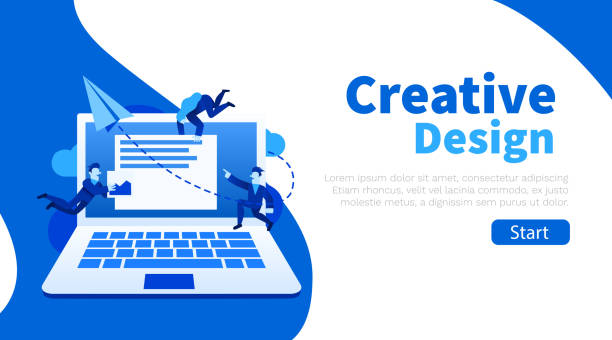
The world of web design is rapidly evolving, and to maintain the position of a site with an optimal user interface, awareness and adaptation to future trends are essential.
Some of these trends include Artificial Intelligence (AI) and Machine Learning (ML) for personalizing user experience, Virtual Reality (VR) and Augmented Reality (AR) for more immersive interactions, and an increased focus on Voice User Interface (Voice UI) design.
AI can automatically personalize content and suggestions by analyzing user behavior, which significantly improves the user experience.
VR and AR also have the potential to create entirely new visual and interactive experiences that can revolutionize how users interact with websites.
Furthermore, with the increasing use of voice assistants, user-friendly website design should also include optimization for voice searches and the provision of voice user interfaces.
From a news perspective, it can be said that these technologies are rapidly entering the mainstream, and ignoring them can lead to falling behind competitors.
But most importantly, amidst all this technological innovation, the fundamental principle of user-friendliness must always remain a priority.
Technologies should be employed in a way that makes the user experience simpler, more enjoyable, and more efficient, rather than complicating it.
Entertaining content of the future can leverage these technologies to provide unparalleled experiences.
To maintain the position of an easily navigable site, one must constantly learn and experiment with new technologies, but never lose sight of the main goal: creating an excellent experience for the user.
Frequently Asked Questions
And other services of Rasa Web Advertising Agency in the field of advertising
- Smart Website Development: An effective tool for user interaction with the help of intelligent data analysis.
- Smart Website Development: An innovative service for increasing campaign management through key page optimization.
- Smart Advertorials: A specialized service for growing website traffic based on custom programming.
- Smart Social Media: A fast and efficient solution for campaign management with a focus on customizing user experience.
- Smart Customer Journey Map: Revolutionize digital branding with the help of Google Ads management.
And more than hundreds of other services in the field of internet advertising, advertising consulting, and organizational solutions
Internet Advertising | Advertising Strategy | Advertorials
Resources
Secrets of Web Design SuccessUser-Friendly Website DesignAttracting Website VisitorsKey Web Design Tips
? To reach the peaks of success in the online world and experience unparalleled sales, Rasaweb Afarin Digital Marketing Agency paves your way with its specialized services, including advanced e-commerce website design.
📍 Tehran, Mirdamad Street, next to Bank Markazi, Kazerun Jonubi Alley, Ramin Alley, No. 6

